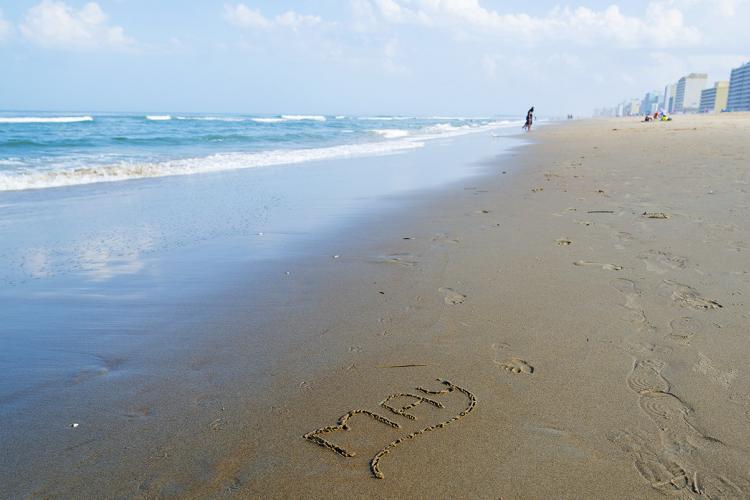If you frequent the gorgeous beaches of Virginia Beach (all 30-plus miles of them!), you’re going to see at least one rip current in your lifetime. Probably several.
You also may find yourself caught in a rip current. This article is here to help you escape it.
First, if lifeguards are warning that a rip current is evident offshore, don’t go swimming! You can dip your toes in the water, of course, but if the lifeguards have warned about rip currents, heed them and stay safe.
According to the United States Lifesaving Association, a rip current is an extremely strong current of water that’s flowing away from shore. Rip currents tend to extend away from the shoreline and outside the surf zone (where waves break). They can occur at any beach where waves are breaking.
The Lifesaving Association estimates that as much as 80 percent of all lifeguard surf rescues can be attributed to swimmers getting caught in a rip current. The organization also estimates that up to 100 people die every year on United States beaches from rip currents.
In other words: a rip current is not to be messed with. If a rip current warning sign is posted on the beach you’re visiting, stay out of the water.
BeachSafe.org offers these tips to help you recognize when a rip current has formed off the beach:
• You’ll see deeper, darker water and fewer breaking waves.
• You’ll sometimes see sandy-colored water that has to extend beyond the surf zone.
• You also may see debris or seaweed moving steadily seaward.
• BeachSafe.org’s best tip: look where the waves are breaking consistently. Then look to each side where they’re not breaking consistently. There’s your rip current.
A rip current can take you far away from shore in an incredibly short time – we’re talking one or two feet per second! You’ll be swept out to sea before you know it.
If you find yourself in a rip current, the best thing you can do for yourself is 1) not panic and 2) let the current take you where it will; don’t fight it: you’ll just exhaust yourself.
Once the current stops moving offshore (and you’ll definitely know this because you will have been moving so quickly and will notice when you stop), swim parallel to the shoreline away from the current. Once safe, start swimming toward shore. If you can’t swim all the way to shore, wave your arms, splash and yell to attract the attention of people on the beach.
If you see someone caught in a rip current, notify the lifeguard. If one isn’t available, call 911 and, if possible, throw a flotation device to the person in the current. Do not attempt to rescue the person yourself. Many people who drown in a rip current were those trying to help someone caught in the current. Leave the rescue to a professional life saver.




